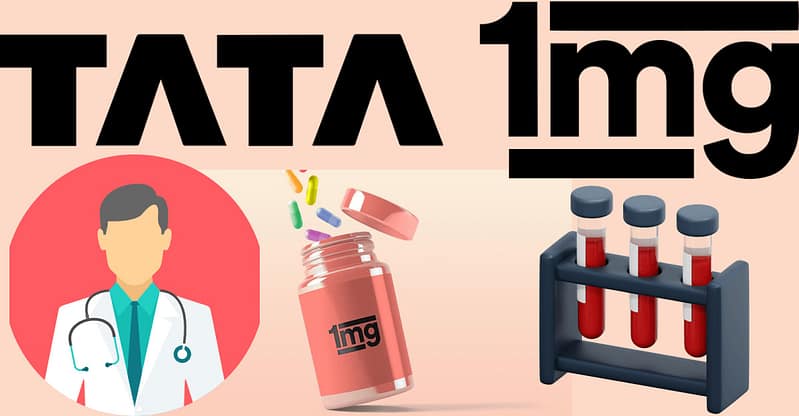The BJP on Tuesday secured a remarkable hat-trick victory in Haryana, overcoming anti-incumbency and shattering Congress’ hopes of a comeback. Meanwhile, the National Conference-Congress alliance achieved a spectacular win in the first elections held in Jammu and Kashmir since the abrogation of Article 370 in 2019.
Significantly, the vote share of the BJP and Congress was almost the same 39.94 percent and 39.04 percent respectively. While the Congress increased its vote share by a massive 11 percent, the BJP’s vote share rose by three percent.
It is pertinent to mention that no party had ever won a third consecutive term in Haryana since its inception in 1966.
Notably, the Dushyant Chautala-led Jannayak Janta Party (JJP), which had emerged as the kingmaker in the 2019 assembly polls, was decimated this time round. JJP had allied with the BJP in 2019 but was unable to win any seats in this election. Meanwhile, the Indian National Lok Dal (INLD) also failed to create much impact, with prominent leaders of both outfits Dushyant Chautala and Abhay Singh Chautala losing their seats.
JJP’s Dushyant Chautala saw a crushing defeat in Uchana Kalan, a seat he was seeking a re-election from, and came at fifth place, behind the BJP and Congress candidates and two independent contestants. Like Dushyant, his uncle and senior INLD leader Abhay Singh Chautala also failed to retain his seat and lost from Ellenabad to Congress’ Bharat Singh Beniwal by a margin of 15,000 votes.
In Jammu and Kashmir, where elections were held for the 90-member Assembly for the first time in a decade, the Congress-National Conference (NC) alliance, part of the opposition INDIA bloc, emerged victorious with 48 seats. The alliance is all set to form the government in Jammu and Kashmir with NC leader Omar Abdulla to be next chief minister.
The NC bagged 42 of the 51 seats it contested while its ‘junior partner’ Congress got six of the 32 it fought. The BJP with 29 seats emerged as the second largest party improving its all-time high tally of 25 in the 2014 elections. It had fielded 62 candidates with a major focus on its strong bastion of Jammu region. Meanwhile, Mehbooba Mufti’s Peoples Democratic Party (PDP) managed to win three seats. The Aam Aadmi Party(AAP) made its debut in the Assembly. Its supremo Arvind Kejriwal congratulated the party for opening its account in a fifth state.
Exponews analysis of Election results.
If the Lok Sabha results were interpreted by some as the beginning of the decline of Narendra Modi’s BJP, the Haryana and J&K assembly election result shows that such exultation was premature.
BJP’s record third consecutive win in Haryana and its emergence as the largest national party in Jammu and Kashmir has significant implications for politics.
Here are five reasons why and how this changes the national polity:
- Haryana shows why BJP is not a pushover in Hindi heartland: BJP fell short of a majority on its own in the Lok Sabha poll primarily because of reverses in its Hindi heartland bastions – UP where it dipped badly, Haryana where it lost half its parliamentary seats and Rajasthan where it dropped a handful as well. These electoral setbacks were primarily driven by some OBC and Dalit voters – who had powered its previous electoral victories – again moving away from the party.
BJP’s return to power for a record third consecutive term in Haryana now – just three months after those reverses – reflect how many of the drivers of the parliamentary reverses may have been more localised and temporary rather than signifying a major structural shift.
There are three reasons for this:
BJP swept OBC seats: BJP has won 20 of 25 OBC-dominant seats (seats with significant non-Jat OBC populations) in Haryana. BJP’s dominance after 2014 was driven by the inclusion of a phalanx of non-dominant OBC castes in key Hindi-speaking states and the loss of some of this support eroded BJP’s bases in parliamentary polls in 2024, especially with non-Yadav OBCs in UP. That trend has been stemmed and reversed.
Jats are evenly split: The idea that Jats, Haryana’s dominant caste, had turned away from BJP – during the farmer protests and the wrestler agitation – hasn’t held up. The Jat vote has been split evenly between Congress and BJP: both won 14 each of the 30 Jat-significant seats in Haryana. Essentially, about half of the Jat vote seems to have stayed with BJP.
Dalits are returning to the fold: A major reason for the BJP’s reverses in June was the loss of Dalit support. Many Dalit voters who had earlier moved to BJP withdrew support driven by a fear of ‘change in the Constitution’ and their reservation rights. Many of those Dalit voters have returned. BJP has won 9 of 17 SC reserved seats in Haryana, ahead of Congress which won 8.
Taken together, this means that BJP in the past three months managed to repair its social coalition in Haryana – was largely based on non-Jat OBCs, Dalits and upper castes – while not losing significant Jat support. This shows the party’s capacity to recover lost ground in Hindi-speaking bastions and the relative durability of its social engineering, given the right conditions. BJP’s 57.3 percent strike rate in Haryana vs Congress’s 38.2 percent reflects how in head-to-head contests, the saffron party continues to have an advantage.
- Brand Modi resurgent again, Congress needs to work on ground strength: It is important to keep in mind that Haryana is not a traditional BJP bastion, like say Gujarat or Madhya Pradesh. BJP had never won power in the state till 2014. That was also the year when it crossed the 30 percent vote threshold in the state for the first time. BJP has no major pan-state leader in Haryana either, like Congress’s Bhupinder Singh Hooda. In fact, BJP barely managed to retain power in 2019 -when it allied with JJP – and recently took evasive action on anti-incumbency by removing Manoharlal Khattar as CM.
In that sense, this victory reaffirms the enduring power of Brand Modi – the PM campaigned in as many as 27 rallies. It also reflects the advantages of the BJP’s strong cadre network in getting the vote out in close contests.
In contrast, Congress suffered losses in most seats where Rahul Gandhi campaigned. Congress may have gained political momentum with a revival in national elections but Haryana highlights how much of a gap remains between both parties in electoral politics. This was Congress’s election to lose. And the result again raises questions about its ground game that it should address if it is to beat BJP.
In Jammu and Kashmir for example, BJP has won its largest number of seats ever and its vote-share (25.73 percent) is over double that of Congress ( 12 percent). In fact, Congress got virtually wiped out in Jammu and failed to enter double digits in terms of seats overall in the region.
- Return of the RSS: By all accounts, RSS cadres were out in strength again in this state election. After reports of a lacklustre and unmotivated cadre response in many northern states by RSS and BJP cadres, the electoral jolt in June seems to have galvanised a deeper ground response. In both Jammu and Haryana, frenetic repair work by saffron cadres over the past month seems to have revived sagging political fortunes.
- BJP’s ability to retain states: BJP’s third straight triumph in Haryana reflects its ability to cement its expanding footprint once it reaches a critical mass in a new area. In the Hindi heartland, Congress has not won back-to-back elections in any state over the past few years. Over the past decade, it beat BJP in Rajasthan, Madhya Pradesh, Bihar and Chhattisgarh at various points, but did not succeed in retaining power in subsequent elections in any of these states. This is in sharp contrast to BJP’ north India bounce-back record in all key states.
- Maharashtra is now a different election: These election results – which belie all exit polls – will significantly change the national political debate. By coming back from the dead in Haryana and turning what looked like certain defeat to a confident victory, BJP has managed to also change the temperature for the upcoming big battle in Maharashtra and Jharkhand. This will galvanise its cadre, restore faith in the leadership and put Opposition parties on notice that this new BJP continues to be a formidable opponent that fights each battle to its last round.
Most importantly, politics is about momentum. Just three month ago, the opposition looked like it had managed to slow down the BJP’s victory lap – if not stop it.
Narendra Modi’s BJP has turned the clock back again with the Haryana triumph and it sets the stage for more high-stakes battles ahead with Rahul Gandhi’s Congress.




















